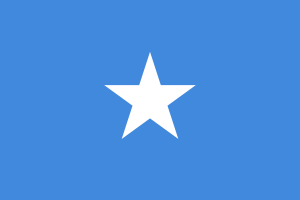Language/Somali/Grammar/Noun-Gender-and-Plurals
| ◀️ Telling Time — Previous Lesson | Next Lesson — Adjective Agreement ▶️ |
As a Somali language teacher with 20 years of experience, I am excited to teach you about Somali grammar. In this lesson, we will focus on noun gender and plurals in Somali. It is important to know these concepts in order to correctly form sentences in Somali. Whether you are a beginner or just looking to refresh your Somali language skills, this lesson will be useful for you.
Take a moment to explore these relevant pages as you conclude this lesson: Conditional Mood & Give your Opinion.
Noun Gender
In Somali, like in many other languages, nouns have gender. There are two genders in Somali: masculine and feminine. It is important to note that gender does not always correspond to biological gender. For example, the word for "car" is masculine (xabado) even though a car is not a biological male.
Nouns that end with the letter "o" or "a" are generally masculine, while nouns that end with the letter "i" are generally feminine. However, there are some exceptions to this rule.
Here are some examples of masculine and feminine nouns in Somali:
| Somali | Pronunciation | English |
|---|---|---|
| xabado | ha-ba-do | car (masculine) |
| jeegaan | je-gaan | table (masculine) |
| qaylo-dhaqameed | kai-lo-dha-ka-meed | traditional clothing (masculine) |
| buundo | bun-do | wall (feminine) |
| saliid | sa-liid | plate (feminine) |
| qorraxda | kor-rax-da | stars (feminine) |
Note that pronunciation in Somali can be challenging for English speakers. Pronunciation guides above represent rough approximations: the system is complex, and actual pronunciation may differ depending on the speaker and dialect.
Forming Plural Nouns
Now that we know about noun gender, let's learn how to form plural nouns in Somali. In general, adding "-o" or "-aha" to the end of a noun makes it plural, depending on the gender of the noun.
Here are some examples of plural nouns in Somali:
| Singular | Plural |
|---|---|
| xabado | xabadaha (cars) |
| jeegaan | jeegaanaha (tables) |
| qaylo-dhaqameed | qaylo-dhaqameedaha (traditional clothing) |
| buundo | buundada (walls) |
| saliid | salliidda (plates) |
| qorraxda | qorraxdaha (stars) |
Note that some plural nouns may have irregular forms. These forms usually involve a change in the vowel used in the singular form of the noun. For example, the singular form of "door" is "dabool," but the plural form is "dabooli."
Gender and Plurals for Adjectives
In addition to nouns, adjectives in Somali also have gender and number agreement. The ending of the adjective changes based on the noun it describes. In general, adjectives that describe masculine nouns end in "-i," while adjectives that describe feminine nouns end in "-o."
When forming adjectives for plural nouns, the same rules apply as for forming plural nouns. For example, the adjective for "green" is "cagaar," which ends in "-i" to agree with the masculine noun "xabado" (car). The plural form of "car" is "xabadaha," so the plural form of "green" would be "cagaarka xabadaha."
Cultural Information and Interesting Facts
Somali is the official language of Somalia and is also spoken in parts of Ethiopia, Kenya, and Djibouti. Written Somali uses the Latin alphabet, which was introduced in the 1970s to replace the Arabic script.
Somali culture is rich in poetry, music, and dance. Many Somalis are also skilled in the art of storytelling. Traditional Somali food includes dishes such as suqaar (a meat dish), anjero (a type of pancake), and camel milk tea. In Somalia, it is common to eat with your hands instead of utensils.
Conclusion
I hope this lesson has been helpful in teaching you about noun gender and plurals in Somali. Remember, practice is key to mastering any language. Take some time to review what you have learned, and try to use these concepts in your own sentences. In the next lesson, we will focus on adjective agreement. Don't forget to practice and have fun!
Upon wrapping up this lesson, take a look at these related pages: Adjectives & Gender.
Other Lessons
- Common Prepositions
- Questions
- Nouns
- Pronouns
- Adverbs
- Basic Verb Conjugation
- Negation
- Gender
- Adjective Agreement
- Personal Pronouns
Sources
- Somali grammar - Wikipedia
- Somali Noun Morphophonology
- Chapter 23 - Somali gender polarity revisited
| ◀️ Telling Time — Previous Lesson | Next Lesson — Adjective Agreement ▶️ |


